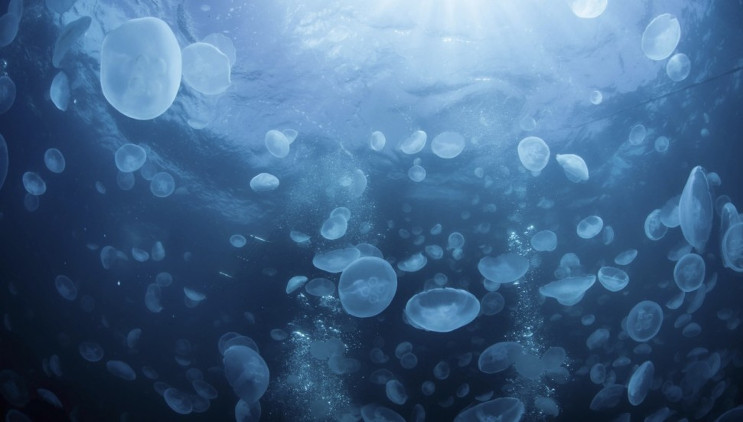China seeks to destroy the jellyfish protecting the aircraft carrier
Chinese officials fear the tiny sea jellyfish may affect the operation of the country's carriers.
Chinese scientists are experimenting with a "jellyfish cutting machine" to reduce the risk of this mollusk could clog the carrier's operating system when they are sucked into the ship, according to SCMP.

Jellyfish, new enemy of Chinese aircraft carriers.(Artwork: SCMP).
"This jellyfish cutting device may be able to clean up the jellyfish-contaminated waters and bring peace of mind to the crew of the carriers," said a Chinese scientist.
According to researcher Tan Yehui, of the Chinese Academy of Sciences in Guangzhou, jellyfish are now becoming a serious threat to carriers because they have large sizes and complex operating systems. .
When a large number of jellyfish are sucked in through the water pipe and clogging the cooling system, the carrier's engine will become overheated and stop working. In addition, removing jellyfish from the vessel's filter system and pipes will take a lot of time.
According to experts, although the navies in many countries have taken many measures to protect their ships from the threat of this mollusk, having to enter the densely packed jellyfish waters is really a problem. the problem.
In 2006, the USS Ronald Reagan nuclear power was deactivated for a while after passing by a large flock of jellyfish in the waters off Australia's Brisbane port.
"What happened to US carriers could happen to Chinese carriers," said Tan.
According to Hebei Fisheries magazine, China's growing jellyfish machine takes the shape of a net several hundred meters long, with sharp blades in the middle. The machine will be towed by a boat at high speed, using the power of the water to draw jellyfish into the blades.
This cutter is capable of chopping jellyfish into small pieces that are no more than 3cm long, one-tenth the size of an adult jellyfish in China's waters.

Simulation of the operation of a jellyfish cutting machine developed by China.(Graphics: SCMP).
Then one day, the water in the sea where the cutting machine works will be chiseled because the piece of jellyfish begins to decompose. About a week later, the water will return to its original state when these fragments destroy it completely.
However, researchers also warned that the method could cause serious environmental problems, such as severed jellyfish that washed ashore, damaging residents and visitors.
Jellyfish poisoning when exposed to human skin causes irritation and even death. If the machine cuts right to the pregnant jellyfish, a large amount of jellyfish eggs will be released into the water and may pose a risk of strong jellyfish outbreaks next season.
Although the cause of the accident has not been clarified, many Chinese marine biologists believe that rising sea temperatures due to climate change have created good conditions for jellyfish to flourish.
In addition, the emergence of sea turtles in China's polluted waters is also the cause of the occurrence of jellyfish that consider this phytoplankton a favorite food.
- Where is China's carrier versus the world?
- Inside the floating air base coming to Vietnam
- How to build an aircraft carrier? Less than 3 minutes you understand
- The Pentagon revealed a confrontation between UFOs and warships, American planes
- 65 interesting things about jellyfish (1)
- Kuznetsov, Russia's most exclusive carrier
- Gerald R. Ford super carrier class process
- Jellyfish species can 'knock down' American carriers
- 65 interesting things about jellyfish (2)
- 12 latest aircraft carriers in the world: How many cars does Asia occupy?
- Beautiful sparkling jellyfish kingdom
- Do you know how jellyfish burn us?
 Surprised: Fish that live in the dark ocean still see colors
Surprised: Fish that live in the dark ocean still see colors Japan suddenly caught the creature that caused the earthquake in the legend
Japan suddenly caught the creature that caused the earthquake in the legend A series of gray whale carcasses washed ashore on California's coast
A series of gray whale carcasses washed ashore on California's coast Compare the size of shark species in the world
Compare the size of shark species in the world